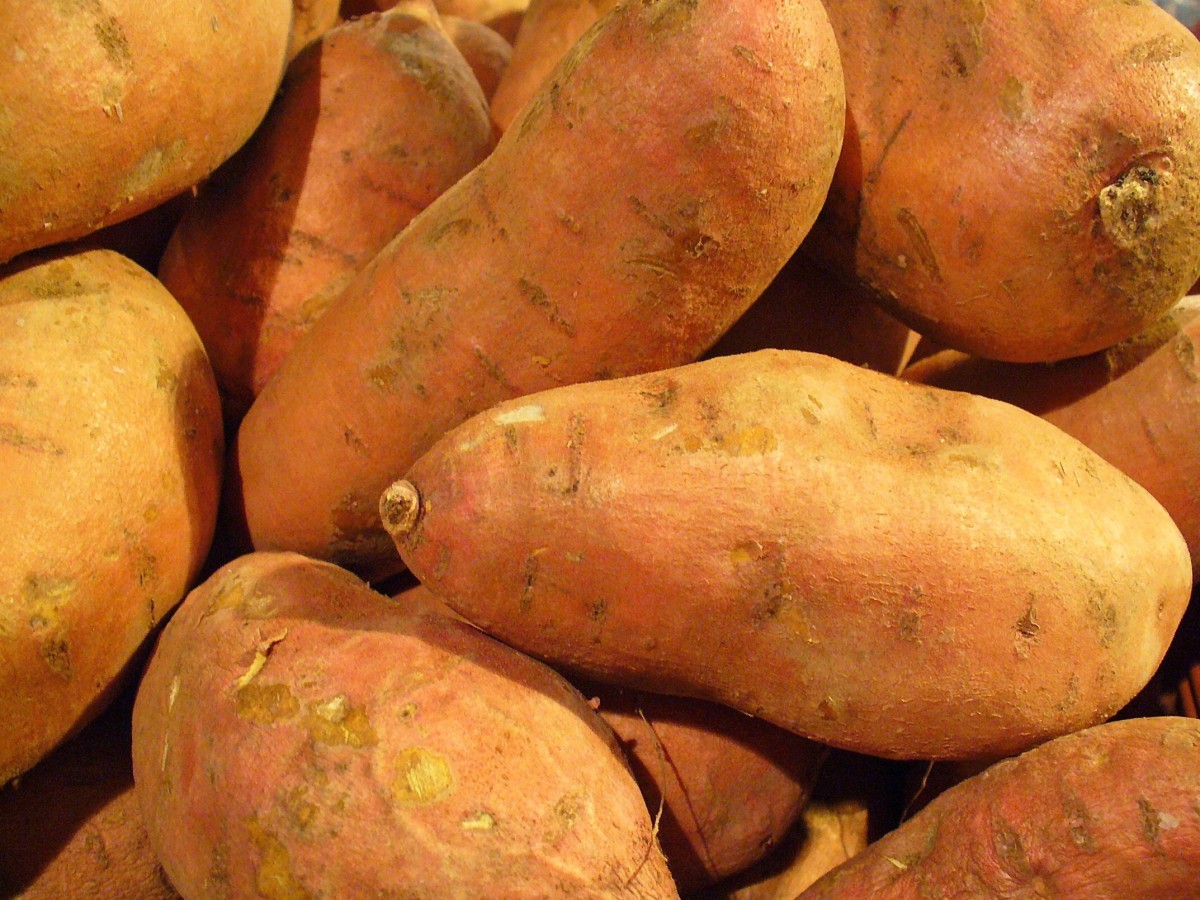The oldest archaeological evidence of sweet potato (Ipomoea batatas) was found in Peru, dated 10,000 to 8000 BP, but there were likely at least two independent domestications, one in Central/Caribbean America and the other in northwestern South America. The sweet potato was then dispersed from these centers throughout tropical America. When the Spanish arrived, it was being grown at low and middle elevations from Michoacan and Veracruz southwest to Peru, Bolivia, Brazil, Paraguay, Argentina, and across the Caribbean.
The sweet potato was taken back to Spain in 1493 by Columbus for tasting by Isabel and Ferdinand. It was well established in the Iberian Peninsula as a garden vegetable by the mid-1500s and across the rest of Europe by 1600. The English colonists in America were growing the sweet potato by 1650, which they probably obtained from the West Indies.
During the 16th century, Spanish and Portuguese traders and travelers introduced sweet potato into the Philippines and Indonesia, and from there it was distributed across the rest of the Asia. Sweet potatoes spread quickly throughout Asia and tropical Africa during the 17th and 18th centuries, and it replaced taro as the most important root and tuber crop in the region. By the 1670s it had become so familiar there that its foreign origins were no longer apparent. It remained the most important tuber and root crop in all tropical and warm temperate regions of the world until 1880, when its primacy was replaced by cassava.
Sweet potato became important in China in the 17th century, after being introduced in the late 1500s. According to Zhang et. al. (2009): “It was said that an overseas Chinese businessman named Zhenlong Chen brought sweet potato from Luzon in the Philippines to Fujian of China. It was Zhenlong Chen’s son, Qinglun Chen, who presented sweet potato, together with his explanations of the “six benefits and eight advantages” of the plant, to the governor of Fujian. The year 1594 was a famine year, and a huge area of crops was destroyed. Sweet potato was brought to the attention of the governor. Consequently, he issued brochures on know-how of sweet potato cultivation and ordered farmers to grow it extensively, in order to stave off famine. Sweet potato was named “Jinshu” (golden root) at that time, because the storage roots harvested from sweet potato saved a great number of people’s lives during the famine.”
Other entries of sweet potato into China have been proposed. People of Zhangzhou, an important southern port of Fujian, claim that sweet potato was first introduced to their region and kept as a secret for a long time. Other reports suggest that sweet potato was brought to China through Yunnan, as early as 1563. There might also have been an overland entry from India and Burma, like maize.
The primary spread of sweet potato in China was from south to east along the coast, and from south to north through the Yangtze River and the Yellow River valleys. As with maize, the Hakka people of China were instrumental in spreading sweet potato in China at the end of the 16th century. Sweet potato spread to become the fifth largest staple crop in China after rice, wheat, maize and soybean.
Illustration: Sweet potatoes
Bibliography:
Boomgaard, P. (2003). In the shadow of rice: Roots and tubers in Indonesian history, 1500-1950. Agricultural History 77: 582-610.
Hancock, J. F. (2022) World Agriculture before and after 1492: Legacy of the Columbian Exchange. Springer
Ho, P. T. (1955). The introduction of American food plants into China. American Anthropologist 57(2), 191-201.
Mann, C.C. (2011) 1493: Uncovering the New World Columbus created. Vintage Books, New York.
Roullier, C., Duputié, A., Wennekes, P., Benoit, L., Fernández Bringas, V. M., Rossel, G., … & Lebot, V. (2013). Disentangling the origins of cultivated sweet potato (Ipomoea batatas (L.) Lam.). PLoS One 8(5), e62707.
Sauer, J. D. (1993). Historical Geography of Crop Plants: A Select Roster. CRC press, Boca Raton
Zhang L., Wang Q., Liu Q. and Wang Q. (2009) Sweetpotato in China. In: Loebenstein G. and Thottappilly G. (eds) The Sweetpotato. Springer, Dordrecht. https://doi.org/10.1007/978-1-4020-9475-0_15
